| Technical Data | |||
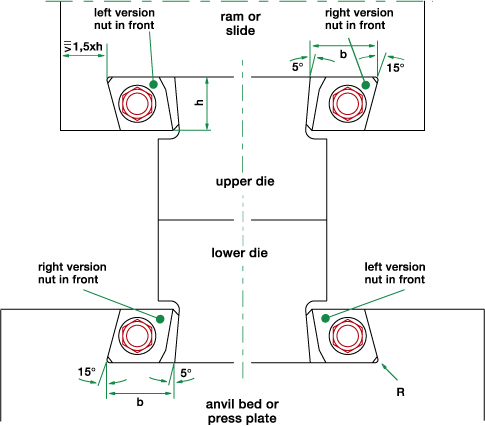 |
The
"left" or "right" version is fixed at the upper
die with the nut in front. |
||
| Dimensions and weights tensioning key version "SB" |
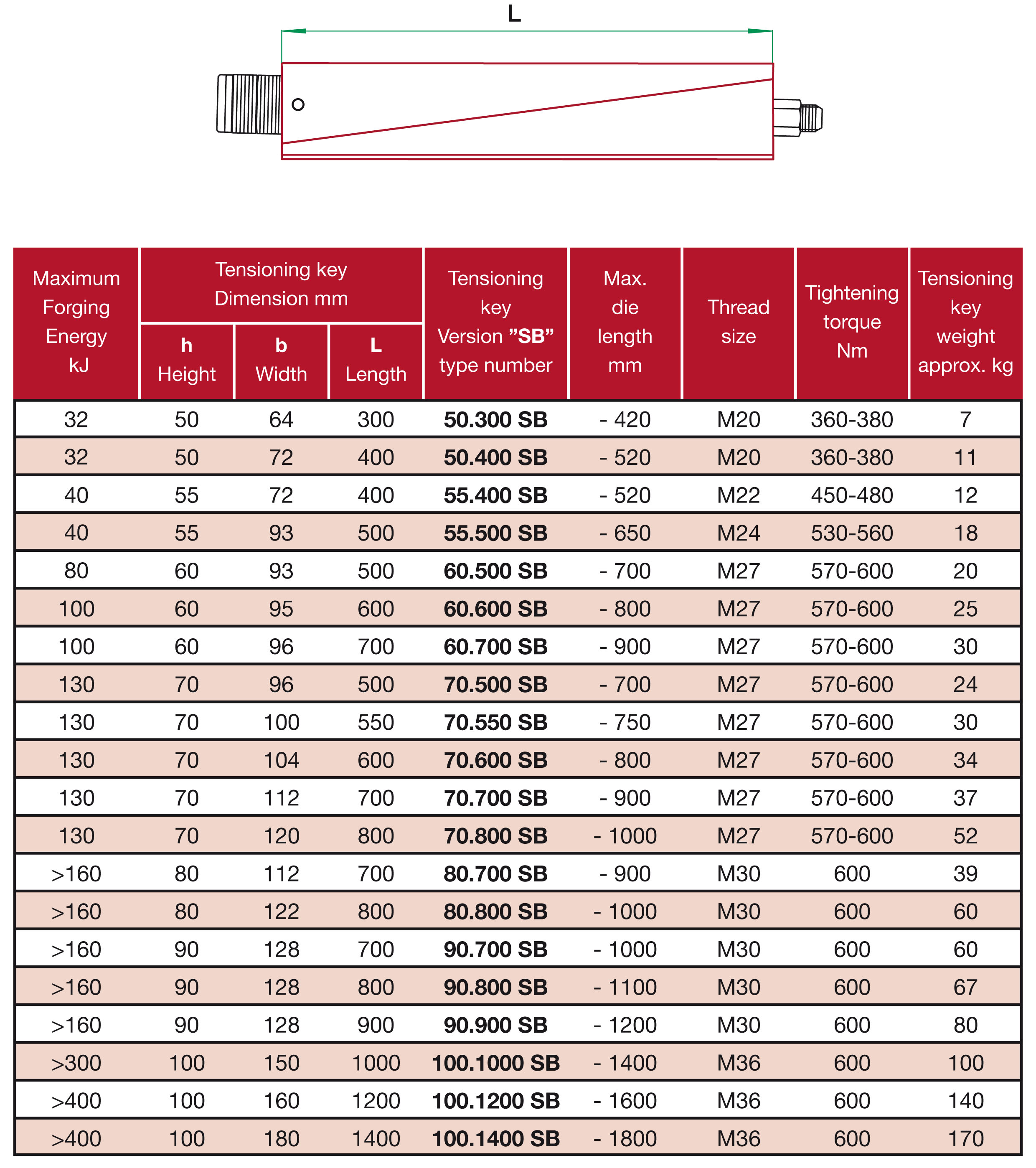 Feuerbacher tensioning keys are also available in other sizes. Please contact us for further information. . |
| Dimensions and weights tensioning key version "DK" |
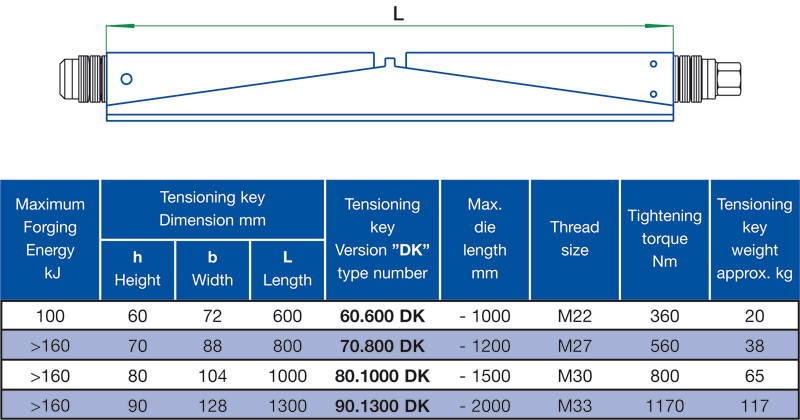 Feuerbacher tensioning keys are also available in other sizes. Please contact us for further information. |
| Dimensions and weights tensioning key version "D" |
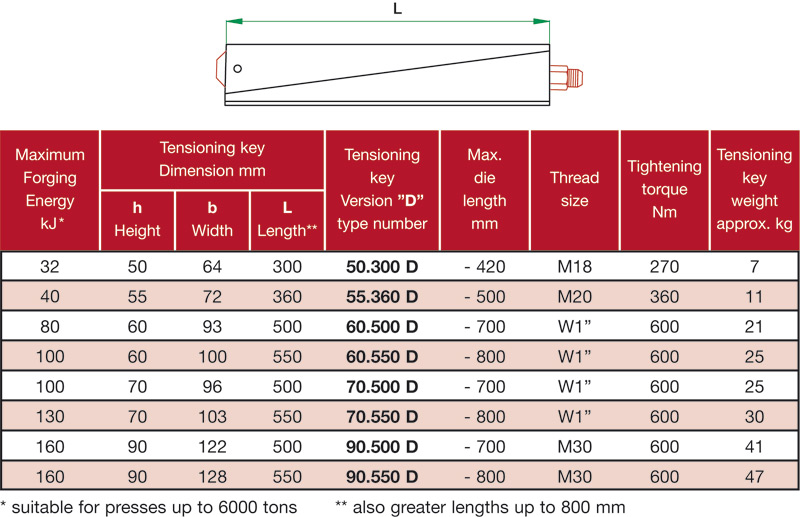 . |
| Guidance values for tensioning key sizes and forging die weights applicable to tensioning key range "SB" |
 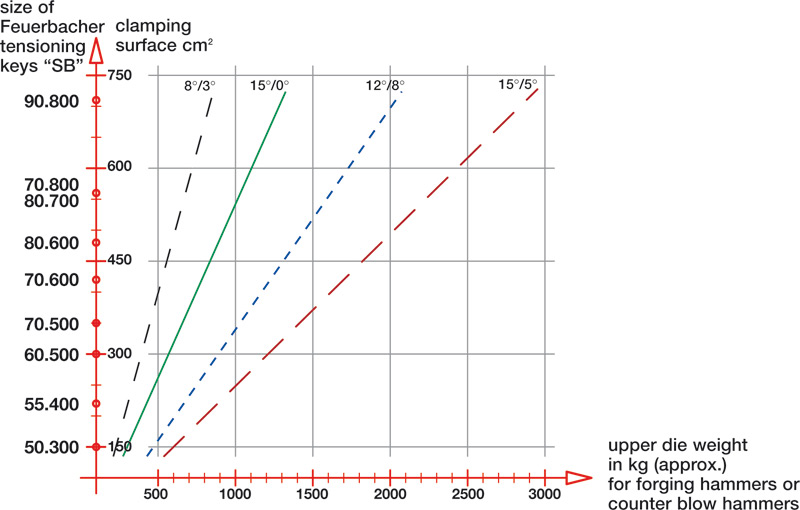 . |
| Guidance values for tensioning key sizes and forging die weights applicable to tensioning keys in the range "SB" and "DK" | |||
|
Feuerbacher tensioning key "SB" Clamping force approx. 4,0 kg per cm2 of contact face - Full contact between surfaces of key halves - Supporting clamping screw - Angles 5º/15º - Externally mounted cup spring set |
|
||
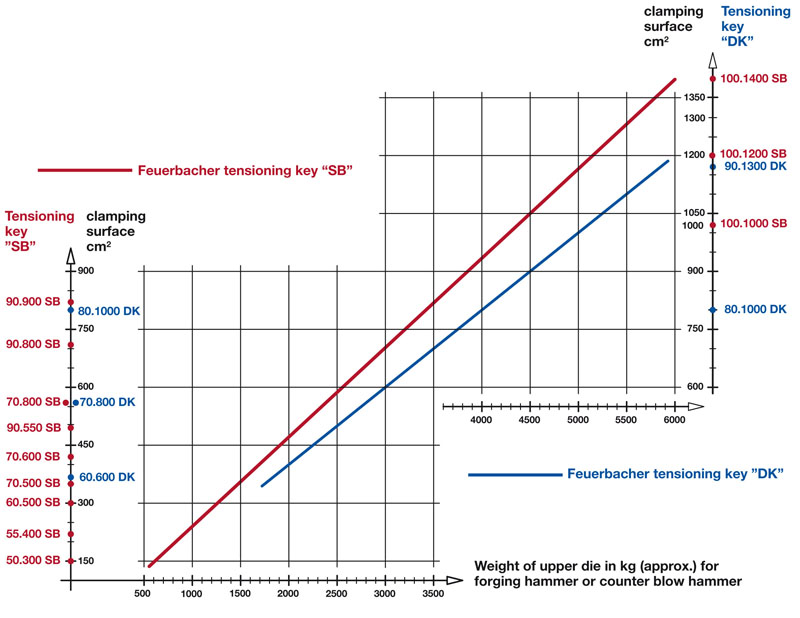 |
|||
| Feuerbacher
tensioning key "DK" Clamping force approx. 5.0 kg per cm2 contact surface - 2 counter acting clamping key halves each with externally mounted cup spring set - Fully supported contact faces of key halves - End to end clamping screw - Angles 5º/15º |
|||
| Slanted hammers and dies, angle at tensioning side, hammer or press | |||
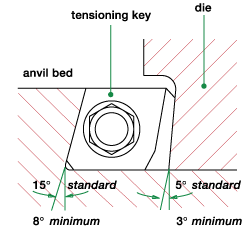 |
|
||
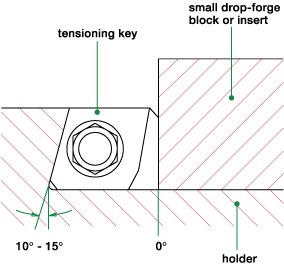 |
|
||
